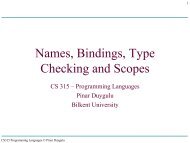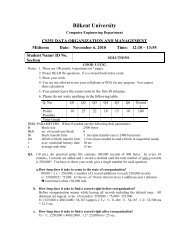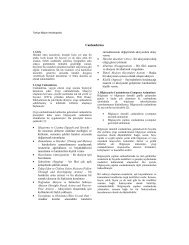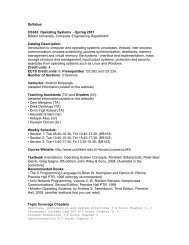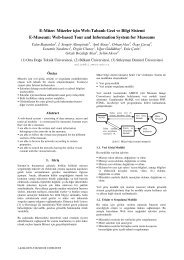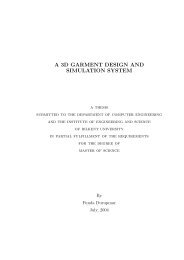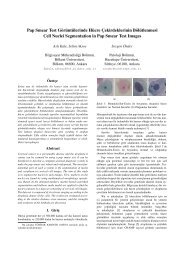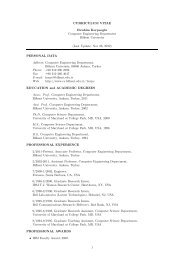On Probability of Success in Linear and ... - Bilkent University
On Probability of Success in Linear and ... - Bilkent University
On Probability of Success in Linear and ... - Bilkent University
Create successful ePaper yourself
Turn your PDF publications into a flip-book with our unique Google optimized e-Paper software.
a µ = 20 µ = 40 µ = 60 µ = 80 µ = 100 µ = 120<br />
8 0.900 0.995 1.000 1.000 1.000 1.000<br />
16 0.585 0.936 0.994 1.000 1.000 1.000<br />
32 0.107 0.527 0.858 0.973 0.996 1.000<br />
48 0.010 0.151 0.490 0.794 0.942 0.988<br />
(a) SN = 1<br />
a µ = 4 µ = 5 µ = 6 µ = 7 µ = 8 µ = 9<br />
8 0.972 0.984 0.991 0.995 0.997 0.998<br />
16 0.969 0.982 0.990 0.994 0.997 0.998<br />
32 0.964 0.979 0.988 0.993 0.996 0.998<br />
48 0.960 0.977 0.986 0.992 0.995 0.997<br />
(b) SN = 1000<br />
Table 4. <strong>Probability</strong> <strong>of</strong> achiev<strong>in</strong>g an a-bit advantage for various values <strong>of</strong> the expected<br />
number <strong>of</strong> right pairs µ, accord<strong>in</strong>g to equation (19).<br />
3.2.1 Alternative Models<br />
It can reasonably be said that the normal approximation for the b<strong>in</strong>omial counters<br />
may not be accurate when Np(1 − p) < 4; hence alternative distributions<br />
should be considered <strong>in</strong> the attacks where SN is high <strong>and</strong> the number <strong>of</strong> rights<br />
pairs is accord<strong>in</strong>gly low. For such attacks, Poisson approximations P(µ0) <strong>and</strong><br />
P(µw) or the orig<strong>in</strong>al b<strong>in</strong>omial distributions B(N, p0) <strong>and</strong> B(N, pw) can be preferred<br />
to model the counters.<br />
Although more accurate results are possible by the Poisson or b<strong>in</strong>omial distributions,<br />
these distributions lack the ma<strong>in</strong> advantage <strong>of</strong> us<strong>in</strong>g the normal distribution,<br />
which is to provide closed form expressions such as (19) <strong>and</strong> (20).<br />
Besides, as the results <strong>in</strong> Section 3.4 show, there does not appear to be a significant<br />
difference between the results obta<strong>in</strong>ed by the normal approximation <strong>and</strong><br />
those obta<strong>in</strong>ed by the orig<strong>in</strong>al b<strong>in</strong>omial distribution, even for smaller values <strong>of</strong><br />
µ0. Hence, the normal approximation appears to be mostly satisfactory. The experimental<br />
results po<strong>in</strong>t out a different, more <strong>in</strong>herent limitation however, which<br />
is discussed <strong>in</strong> Section 3.4.<br />
3.3 <strong>Probability</strong> <strong>of</strong> Top Rank<strong>in</strong>g<br />
Similar to that <strong>in</strong> LC, a more precise, direct calculation <strong>of</strong> the success probability<br />
<strong>of</strong> a differential attack is possible for the special case a = m (i.e., when the right<br />
key is to be ranked the highest) which does not use the normal approximation<br />
12




